1.27: Biotic Interactions
- Page ID
- 70346
\( \newcommand{\vecs}[1]{\overset { \scriptstyle \rightharpoonup} {\mathbf{#1}} } \)
\( \newcommand{\vecd}[1]{\overset{-\!-\!\rightharpoonup}{\vphantom{a}\smash {#1}}} \)
\( \newcommand{\dsum}{\displaystyle\sum\limits} \)
\( \newcommand{\dint}{\displaystyle\int\limits} \)
\( \newcommand{\dlim}{\displaystyle\lim\limits} \)
\( \newcommand{\id}{\mathrm{id}}\) \( \newcommand{\Span}{\mathrm{span}}\)
( \newcommand{\kernel}{\mathrm{null}\,}\) \( \newcommand{\range}{\mathrm{range}\,}\)
\( \newcommand{\RealPart}{\mathrm{Re}}\) \( \newcommand{\ImaginaryPart}{\mathrm{Im}}\)
\( \newcommand{\Argument}{\mathrm{Arg}}\) \( \newcommand{\norm}[1]{\| #1 \|}\)
\( \newcommand{\inner}[2]{\langle #1, #2 \rangle}\)
\( \newcommand{\Span}{\mathrm{span}}\)
\( \newcommand{\id}{\mathrm{id}}\)
\( \newcommand{\Span}{\mathrm{span}}\)
\( \newcommand{\kernel}{\mathrm{null}\,}\)
\( \newcommand{\range}{\mathrm{range}\,}\)
\( \newcommand{\RealPart}{\mathrm{Re}}\)
\( \newcommand{\ImaginaryPart}{\mathrm{Im}}\)
\( \newcommand{\Argument}{\mathrm{Arg}}\)
\( \newcommand{\norm}[1]{\| #1 \|}\)
\( \newcommand{\inner}[2]{\langle #1, #2 \rangle}\)
\( \newcommand{\Span}{\mathrm{span}}\) \( \newcommand{\AA}{\unicode[.8,0]{x212B}}\)
\( \newcommand{\vectorA}[1]{\vec{#1}} % arrow\)
\( \newcommand{\vectorAt}[1]{\vec{\text{#1}}} % arrow\)
\( \newcommand{\vectorB}[1]{\overset { \scriptstyle \rightharpoonup} {\mathbf{#1}} } \)
\( \newcommand{\vectorC}[1]{\textbf{#1}} \)
\( \newcommand{\vectorD}[1]{\overrightarrow{#1}} \)
\( \newcommand{\vectorDt}[1]{\overrightarrow{\text{#1}}} \)
\( \newcommand{\vectE}[1]{\overset{-\!-\!\rightharpoonup}{\vphantom{a}\smash{\mathbf {#1}}}} \)
\( \newcommand{\vecs}[1]{\overset { \scriptstyle \rightharpoonup} {\mathbf{#1}} } \)
\(\newcommand{\longvect}{\overrightarrow}\)
\( \newcommand{\vecd}[1]{\overset{-\!-\!\rightharpoonup}{\vphantom{a}\smash {#1}}} \)
\(\newcommand{\avec}{\mathbf a}\) \(\newcommand{\bvec}{\mathbf b}\) \(\newcommand{\cvec}{\mathbf c}\) \(\newcommand{\dvec}{\mathbf d}\) \(\newcommand{\dtil}{\widetilde{\mathbf d}}\) \(\newcommand{\evec}{\mathbf e}\) \(\newcommand{\fvec}{\mathbf f}\) \(\newcommand{\nvec}{\mathbf n}\) \(\newcommand{\pvec}{\mathbf p}\) \(\newcommand{\qvec}{\mathbf q}\) \(\newcommand{\svec}{\mathbf s}\) \(\newcommand{\tvec}{\mathbf t}\) \(\newcommand{\uvec}{\mathbf u}\) \(\newcommand{\vvec}{\mathbf v}\) \(\newcommand{\wvec}{\mathbf w}\) \(\newcommand{\xvec}{\mathbf x}\) \(\newcommand{\yvec}{\mathbf y}\) \(\newcommand{\zvec}{\mathbf z}\) \(\newcommand{\rvec}{\mathbf r}\) \(\newcommand{\mvec}{\mathbf m}\) \(\newcommand{\zerovec}{\mathbf 0}\) \(\newcommand{\onevec}{\mathbf 1}\) \(\newcommand{\real}{\mathbb R}\) \(\newcommand{\twovec}[2]{\left[\begin{array}{r}#1 \\ #2 \end{array}\right]}\) \(\newcommand{\ctwovec}[2]{\left[\begin{array}{c}#1 \\ #2 \end{array}\right]}\) \(\newcommand{\threevec}[3]{\left[\begin{array}{r}#1 \\ #2 \\ #3 \end{array}\right]}\) \(\newcommand{\cthreevec}[3]{\left[\begin{array}{c}#1 \\ #2 \\ #3 \end{array}\right]}\) \(\newcommand{\fourvec}[4]{\left[\begin{array}{r}#1 \\ #2 \\ #3 \\ #4 \end{array}\right]}\) \(\newcommand{\cfourvec}[4]{\left[\begin{array}{c}#1 \\ #2 \\ #3 \\ #4 \end{array}\right]}\) \(\newcommand{\fivevec}[5]{\left[\begin{array}{r}#1 \\ #2 \\ #3 \\ #4 \\ #5 \\ \end{array}\right]}\) \(\newcommand{\cfivevec}[5]{\left[\begin{array}{c}#1 \\ #2 \\ #3 \\ #4 \\ #5 \\ \end{array}\right]}\) \(\newcommand{\mattwo}[4]{\left[\begin{array}{rr}#1 \amp #2 \\ #3 \amp #4 \\ \end{array}\right]}\) \(\newcommand{\laspan}[1]{\text{Span}\{#1\}}\) \(\newcommand{\bcal}{\cal B}\) \(\newcommand{\ccal}{\cal C}\) \(\newcommand{\scal}{\cal S}\) \(\newcommand{\wcal}{\cal W}\) \(\newcommand{\ecal}{\cal E}\) \(\newcommand{\coords}[2]{\left\{#1\right\}_{#2}}\) \(\newcommand{\gray}[1]{\color{gray}{#1}}\) \(\newcommand{\lgray}[1]{\color{lightgray}{#1}}\) \(\newcommand{\rank}{\operatorname{rank}}\) \(\newcommand{\row}{\text{Row}}\) \(\newcommand{\col}{\text{Col}}\) \(\renewcommand{\row}{\text{Row}}\) \(\newcommand{\nul}{\text{Nul}}\) \(\newcommand{\var}{\text{Var}}\) \(\newcommand{\corr}{\text{corr}}\) \(\newcommand{\len}[1]{\left|#1\right|}\) \(\newcommand{\bbar}{\overline{\bvec}}\) \(\newcommand{\bhat}{\widehat{\bvec}}\) \(\newcommand{\bperp}{\bvec^\perp}\) \(\newcommand{\xhat}{\widehat{\xvec}}\) \(\newcommand{\vhat}{\widehat{\vvec}}\) \(\newcommand{\uhat}{\widehat{\uvec}}\) \(\newcommand{\what}{\widehat{\wvec}}\) \(\newcommand{\Sighat}{\widehat{\Sigma}}\) \(\newcommand{\lt}{<}\) \(\newcommand{\gt}{>}\) \(\newcommand{\amp}{&}\) \(\definecolor{fillinmathshade}{gray}{0.9}\)Interactions between individual organisms
Organisms interact with each other and these interactions can have significant consequences to the participants. Most students are familiar with the classification scheme below which organizes interactions into types based on the consequences of the interaction on the two participants:
|
effect on the 'larger' organism |
||||
|
(-) negative |
(0) neutral |
(+) positive |
||
|
effect on the 'smaller' organism |
(-) negative |
competition |
amensalism |
predation, herbivory |
|
(0) neutral |
amensalism |
'neutralism' |
commensalism |
|
|
(+) positive |
parasitism |
commensalism |
mutualism |
|
There are multipleproblems with this scheme. It is not clear what level, organism or population, it is focused on or how effects might be measured. If considering at the individual level 'positive' might be monitored by organism size, growth rate, longevity or reproductive success. But if considering the population, level one might consider population density or population growth rate. Sometimes what is 'positive' and what is 'negative' may not be obvious. Some fungal endophytes substantially increase the growthof plants (positive effect) that they infect, yet at the same time reduce or eliminate the likelihoodof producing offspring (negative effect). Nitrogen-fixing bacteria infecting roots may benefit plants (faster growth, bigger plants) if soil nitrogen is low, but harm plants (slower growth, smaller plants) if nitrogen levels are high. Pollinator visits may benefit plants if they transport pollen to other members of the same species but not if their next visits are to different flower species.
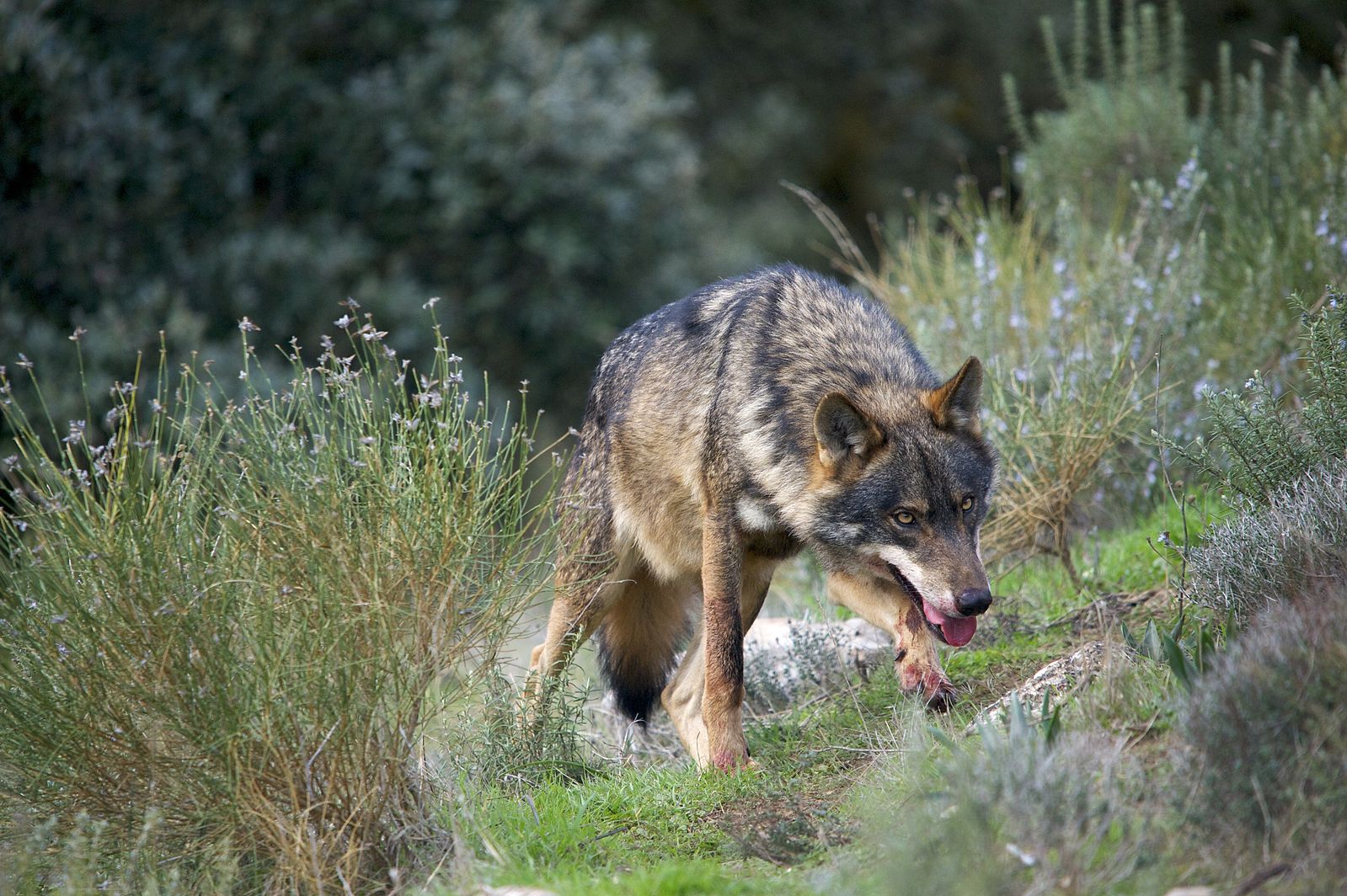
Perhaps the most significant biological context for the terms would be evolutionary (positive = enhanced reproductive success) but this may depend on circumstances that are difficult to evaluate. Predators would generally be thought to have a negative on prey populations, but in a number of situations, predators are thought to 'benefit' prey populations by preventing overpopulation (Figure 1). Another problem with the scheme is that it ignores the fact that the consequences of interactions may be very different at different levels of biological interaction. Seed predation (e.g., Clark's nutcracker eating pine seeds, Figure 2)) is clearly harmful to most individual pine organisms (i.e., the embryonic pine individual present in a seed) but apparently benefits the pine populations by allowing for dispersal.
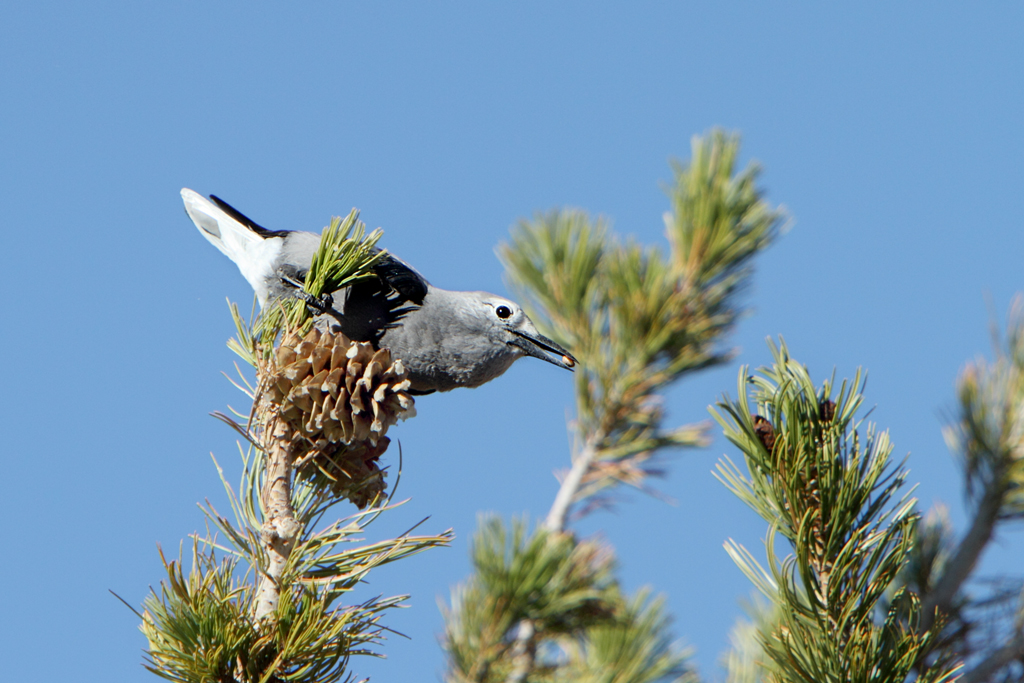
Another way to organize biotic interactions is not based upon arbitrary considerations of what 'benefits' or 'harms' the organisms/populations involved, instead, it is based upon the medium through which the interaction occurs:
- trophic interactions—one organism eats another or part of another, obtaining material (carbohydrates, proteins, fats) that can be used both for ener gy (i.e., burned in cellular respiration) or partially broken down and reformed into molecules of the consumer
- resources/ conditions interactions—Resources are materials ( e.g., oxygen ) that an organism either produces, making them available for other organisms or depletes/consumes, making them less available for other organisms . Conditions are physical parameters, e.g., pH, temperature, humidity, light intensity. Conditions influence organism behavior and organisms can change conditions and thereby affect other organisms. Resources and conditions are combined here because several can be considered both as a resource and a condition. Oxygen can be considered a resource because oxygen can be produced or consumed but it also is a condition that has physical consequences, e.g., oxygen concentrations affect the solubility of ions in the soil solution. Similarly, light is a resource that plants ' consume ' , reducing its availability to the shaded plants below, but it also is a physical condition that influences all organisms in a number of ways.
- work interactions—one organism does work for another organism (work in the sense of physics, and chemistry, a process that requires the expenditure of energy, e.g., moving material from one place to another).
TOPICS
- Trophic interactions
- Predation
- Grazing
- Parasitoids
- Parasites
- Leftovers
- Interactions involving resources and conditions
- Work interactions
Trophic Interactions
Although all trophic interactions are 'organism A eats organism B' , resulting in a transfer of material from A to B, the way the eating is done varies greatly and it may be the case that the most significant consequences of the interaction do not involve the transfer of material. Below are four categories of trophic interactions involving the organisms considered in this course. The categories are based on the consequences to the two 'players' of the trophic relationship: the organisms doing the eating ( 'eater' ) and the organism being eaten (the 'eatee' ). Although it is generally the case that the eatee is harmed because it loses material, and the eater benefits because it gains material, this is not necessarily the case and sometimes other components of the interaction are even more significant.
Predation
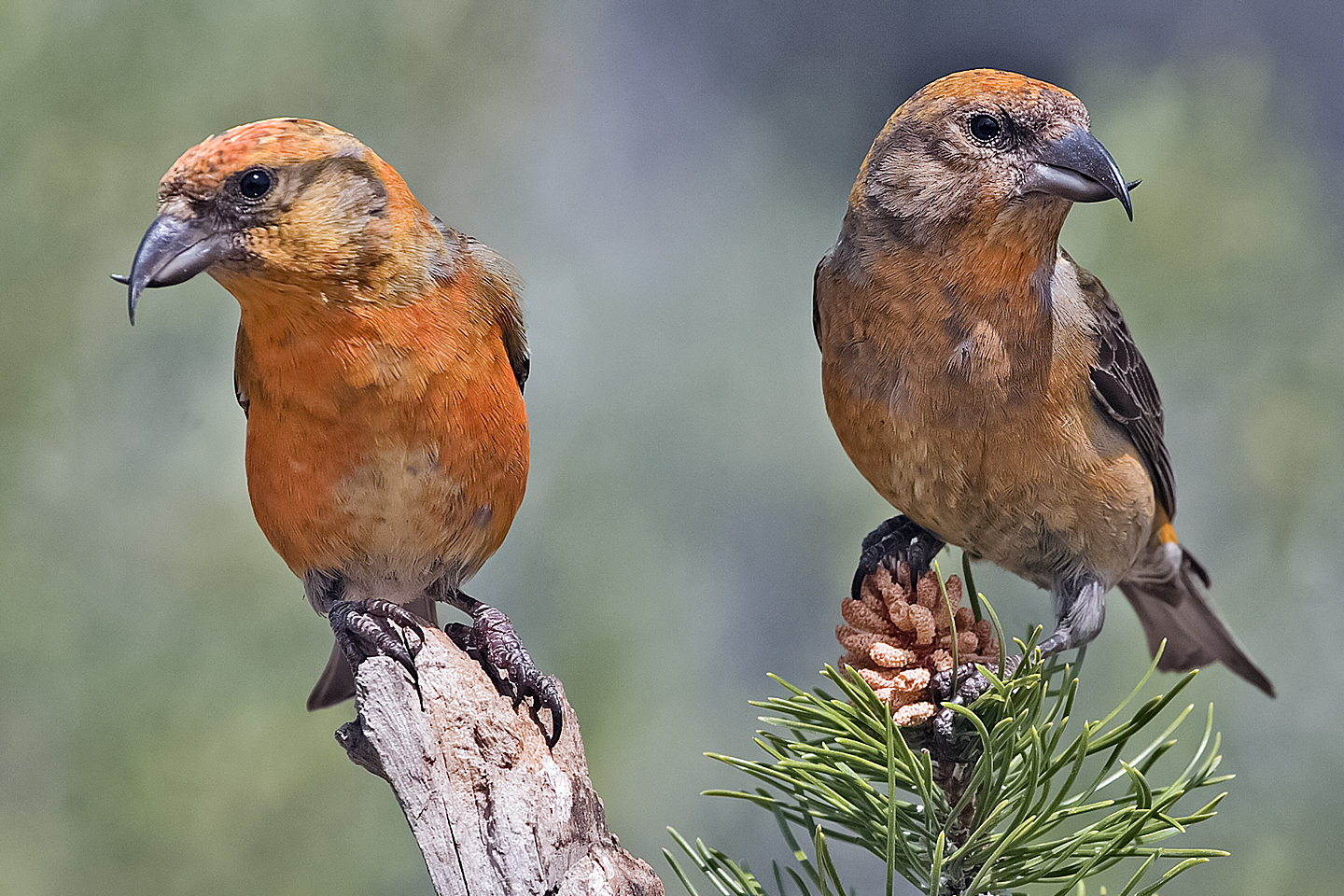
The eating event kills the 'eatee' (the organism being eaten) and the eater consumes multiple prey items during its life (Figure 3). In plants, this generally only occurs when the plantsare small when they are seeds ( 'seed predation' ), or the consumption of seedlings. The embryonic plants found in a seed are particularly nutritious per unit weight because, compared to larger plants, they have relatively less structural material (i.e., cell walls) and relatively high concentrations of minerals and vitamins. The eater benefits from the nutrition obtained (assuming that eatee does not contain toxins that the eater cannot handle) and the eatee is eliminated. This interaction has driven evolutionary changes involving chemical, physical and phenological (timing) changes in plants, and consequent changes in predators, for as long as seed plants have been around. In a number of instances, the interaction has developed into a mechanism of seed dispersal, utilizing an eater 's mobility and perhaps its caching behavior (see the reading on pines and the Clark' s Nutcracker). Seed predationalso was probably a driving force in the development of (fleshy) fruits as a means of seed dispersal:plantsdeveloped features that would reward the eatee in a way that did not involve (permanently) consuming the seed and killing its embryo. Seed predation also accounts for fruit structure that most definitely doesprotect the seeds inside (e.g., nuts), although seed predators have responded by developing structures (sharp teeth of saki monkeys or beaks of goldfinch, Figure 4) and behaviors that allow them to open seeds, or digestive systems that grind the seed coat or fruit coat away. Although most of the organisms that we have studied are photosynthetic autotrophs (plants, algae) and are the eatees, we have also considered some organisms that are the eaters (cellular and plasmodial slime molds, and some of the euglenoids and dinoflagellates). Some fungi are predators in the classic sense (i.e., they capture prey and kill them, http://www.mykoweb.com/articles/FungalSnares.html), and a number of fungi are predators in a less classical sense, being capable of killing their food with toxins or other processes.

Grazing
The eater (grazer) does not kill the eatee, but only eats part of it, and usually, the grazer eats parts of several individuals. Most familiar examples of herbivory (eating of plants) are grazing: cows and grass, deer and shrubs, J apanese beetles (Figure 5) and ornamental plants. While most grazing on plants is on their leaves, some organisms graze on other parts: pollen, flowers, ovaries, roots). Although p lants are the most common kind of organism
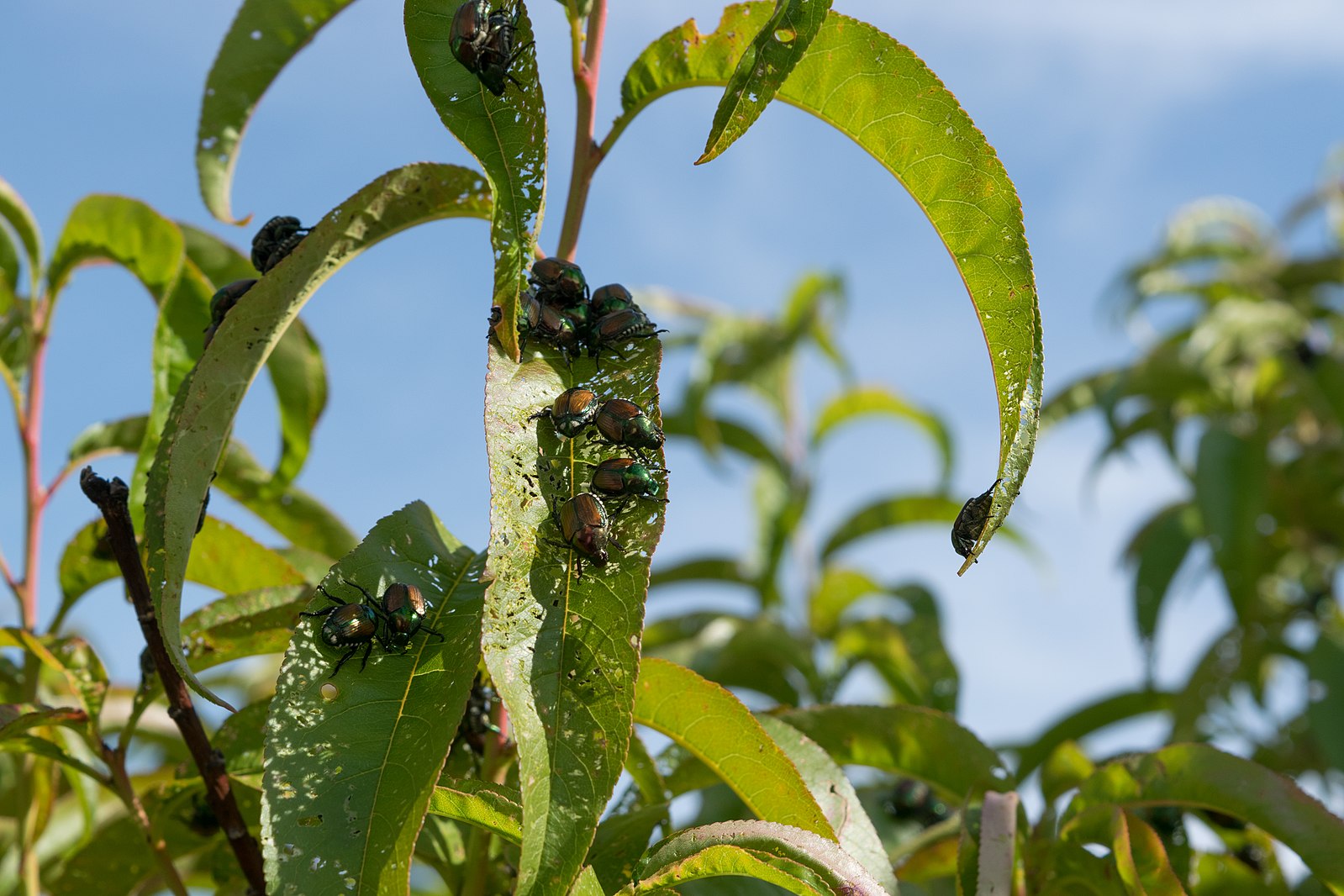
grazed upon there are several other ' inanimate ' groups that are grazed: photosynthetic protists ( ' algae ' ), a few non-photosynthetic protists (plasmodial slime molds) and many fungi . Grazing is most likely to occur on organisms that have indeterminate growth. Most grazing on plants is on leaves and the eatee is affected both by the loss of photosynthetic area (and hence the ability to photosynthesize) and also because of the loss of nutrients (e.g., nitrogen and phosphorus) that are relatively hard to replace. Too much grazing can be fatal for the eatee but lesser amounts of grazing sometimes actually produce beneficial results; for instance, grazing of apical meristems can induce branching and produce a plant that actually produces more leaves, flowers and fruits.

One particularly significant aspect of grazing is that it is a means of disease transmission between individuals , comparable to a mosquito (also a grazer) spreading malaria. Leafhoppers and aphids are both insects that have piercing mouthparts to acquire nutrients from phloem tissue in leaves and stems. If they move from an infected plant to another plant they can transmit pathogens (viruses, bacteria and others) in the process, and often this is the most significant aspect of their grazing (Figure 6).
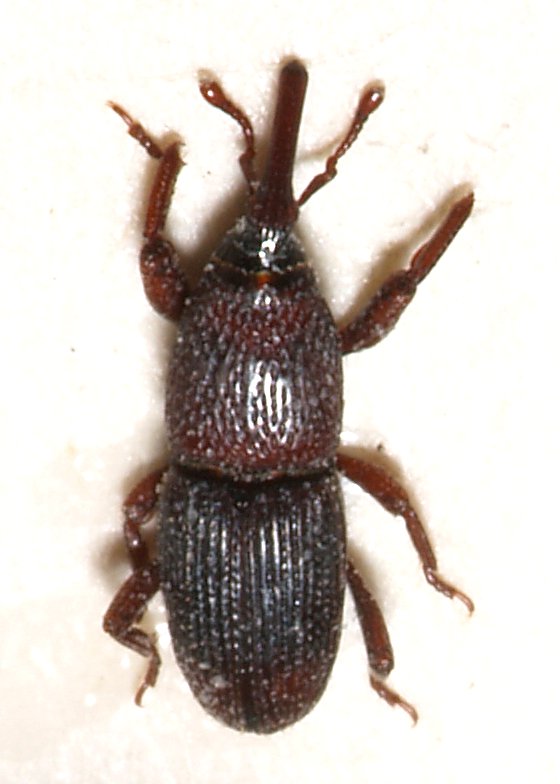
Parasitoids
The distinctive feature here is that the reproduction of the eater is obligatelyand directlyassociated with the trophic event and that the eatee dies as a result of the association. While any heteterotroph must consume food in order to acquire the matter and energy needed to reproduce, in the case of parasitoids the connection is direct because a propagule (usually a fertilized egg) is deposited on the eatee. The vast majority of parasitoid interactions involve insects, one as the eater and another as the eatee. But occasionally plants are parasitoid prey, sometimes by organisms consumingseeds (e.g., granary weevils (Figure 7) and acorn weevils http://video.nationalgeographic.com/video/animals/bugs-animals/beetles/weevil_acorn/) and also some fungi, termed necrotrophic fungi, who infect their hosts (plants), kill them with toxins and then feed on the dead tissue, eventually producing fungal reproductive structures.
Parasites
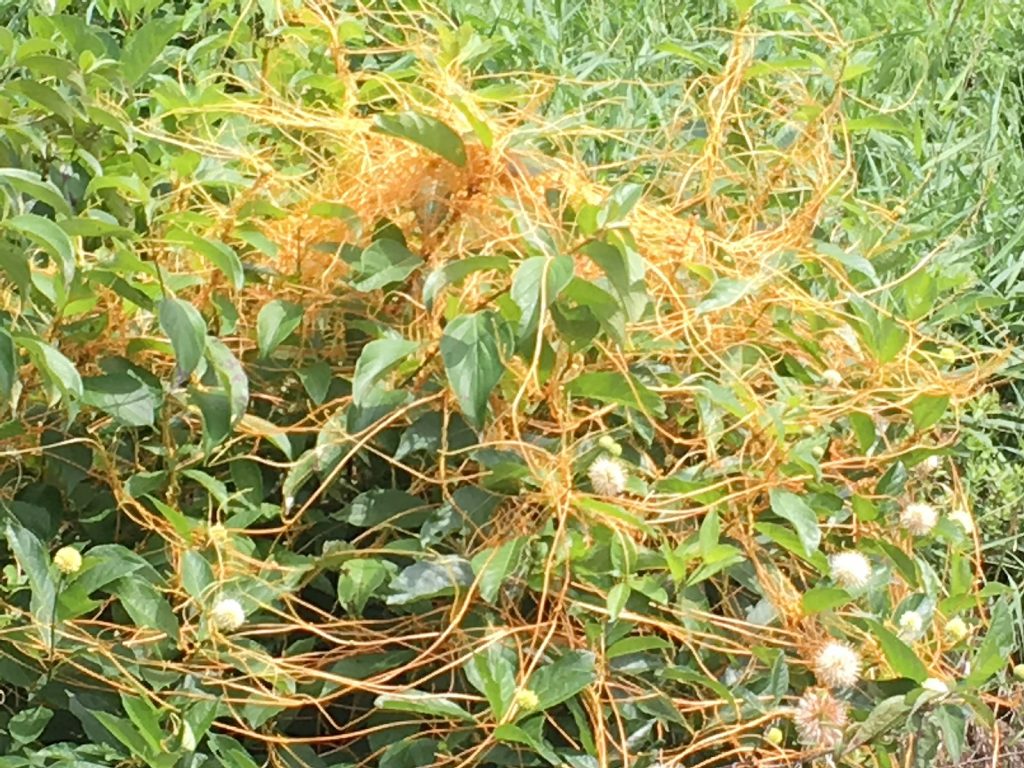
As in grazing, the eater generally does not kill the eatee, but in contrast to grazing, the eater generally only feeds upon one host and thus is not typically a means of spreading disease from one eatee to another. Evolutionarily, one might argue that parasites (and perhaps some grazers) adopt a strategy of keeping their host alive in order to assure a food supply for a longer time. There are a number of fungi called biotrophic fungi, including the important plant pathogenspowdery mildews and rusts, that feed off of living plant tissue and would be considered parasites. They produce structures called haustoria that penetrate the cell wall and interact with the plant cell plasma membrane, providing them with access to materials (e.g., sugars, amino acids) present in the cytosol. Dodder (Figure 9) a non-photosynthetic flowering plant, also produces haustoria. These penetrate into the phloem tissue of their hosts and provide them with nutrition. The fungal component of mycorrhizae would be considered parasites, as would be the nitrogen-fixing bacteria that form galls in some plants. Indeed, mostgall-forming organisms (insects, fungi, mites) would be considered parasites. The gall is an abnormal growth induced by the presence of the parasite. The parasite is fed by its host and ultimately exits the gall.
(As an example see www.wenatcheenaturalist.com/sagebrush-galls/ or www.fllt.org/inside-the-goldenrod-gall/ ). Most of these interactions are similar to parasitoids in that the reproduction of the eater is dependent on the interaction, however, the host is not killed. In most instances, the eatee suffers because of a loss of nutrients, and the eater benefits because it is provided with nutrition and often with protection as a result of the structure of the gall.
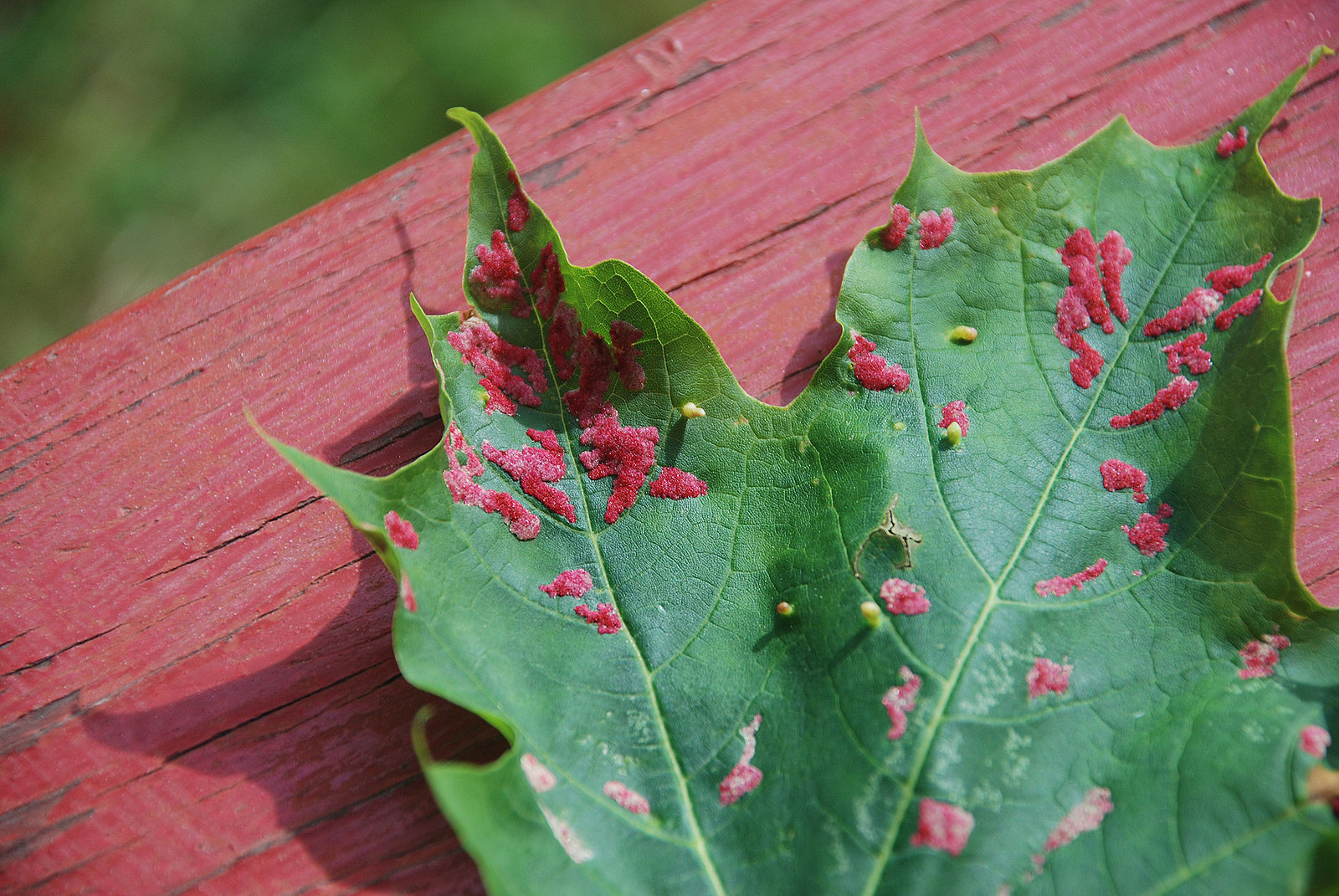
Saprophytes, i.e., eating 'leftovers'
All organisms are a source of food after they die and thereby represent an 'easily captured' prey item. Heterotrophs that consume material (plant, animal, fungal and others) that is already dead (i.e., they did not kill it) are termed saprophytes. Because plants are continually shedding leaves and roots (and in many cases stems), these discarded items are often abundant and provide food for a number of organisms. The nutrient quality of these discarded items is generally substantially below that of living tissues because the plant, in the process of senescence, recycles materials, retrieving much of the material present in the soon to be discarded item before it is actually shed. Leaf protein, nucleic acid and mineral concentrations all decline drastically before leaves are shed and the remaining material is much less digestible both because most of the molecules that remain(e.g., cellulose, lignin) are more difficult to degrade and because of the lack of nitrogen makes it hard to build up substantial populations of saprophytes. Organisms(especially larger ones. e.g., earthworms, insect larvae) feeding on dead organic material often obtain nutrition, perhaps most of their nutrition, from the consumption of much smaller organisms (e.g., bacteria, amoebae, fungi) that are present on the decaying material and not from theorganic material itself, i.e., they are really getting their nutrition from being predators, not saprophytes. Bacteria and fungi are the most significant saprophytes in the soil but other groups (cellular slime molds, plasmodial slime molds and heterotrophic forms of euglenoids) may also be saprophytic. In aquatic systems, a significant amount of organic material can be broken down to the point that it dissolves and ispresent as dissolved organic material, which some organisms are able to assimilate.
Conditions/Resources Interactions
All organisms change the resources and conditionsaround them. The extent to which this affects other organisms depends on: how big the organism is (big things have more of an effect than small ones), how plentiful they are (i.e., their population size) and precisely what changes they bring about. Any organism is a 'producer, ' i.e., it grows and produces a resource (i.e., biomass) that some other organisms can eat. Therefore all organisms must provide resources. Plants (andmore generally autotrophs) are particularlyimportant in a resource sense because, being the base of food chains, their activity represents how many trophic resources are available to entire communities. Also, except for autotrophs who are self-feeders, all other organisms, i.e, . heterotrophs, eat something and can influence other species by depleting that resource. But there are many other ways that organisms interact with each other besides affecting trophic resources. Here are some examples:
The trees of a forest substantiallychange the conditions below them.Temperatures are moderated (cooler in the daytime, warmer at night). Wind is moderated. Rainfall/snowfall patterns are changed. For deciduous forests the annual deposit of leaves covers the ground surfaceand acts like insulation, keeping the soil warmer in the fall and cooler in the spring. In evergreen forests, leaves layer the ground but the fact that they do not come all at once alters the dynamics. Leaf litter affects soil chemistry. Thus different species can have different effects. The tipping over of a tree root system that occurs when trees are blown over changes the topography and exposes lower mineral layers. And some species (e.g., yellow birch) germinate best in mineral soil because the roots of seedlings are unable to penetrate a blanket of leaf litter.
Oxygen consumption by organisms in terrestrial habitats generally has little impact because the oxygen levels in the air are high (~20% of the air is oxygen) and because winds keep the air well-mixed and localized depletions are unlikely. In contrast, oxygen depletion in the soil and in some aquatic situations can havevery significant consequences. In waterlogged soil, oxygen consumption by roots, fungi and a host of soil organisms, coupled with reduced oxygen movement in soils water-filled pores, can make the soil anaerobic. Similarly, unless there are processes promoting mixing of the water column, respiration by heterotrophs at the bottom of the lake significantly lowersthe oxygen levels, potentially affecting all organismsliving there.
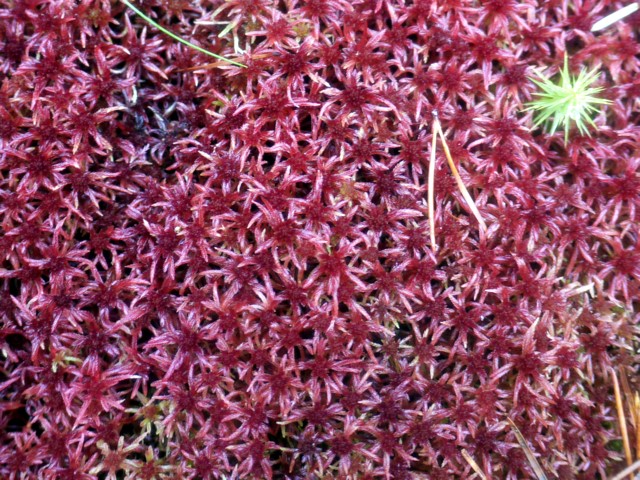
A globally significant example of organisms changing oxygen availability and consequently affecting other organisms involves Sphagnummossand areas known as bogs. Sphagnum mosscan develop high population densities and this, coupled with their pattern of growth, creates a dense mat of stems elongatingat the top but withan extensive layer of dead stem and leaf material below. The stems and leaves hold substantial quantities of waterand water is also held in the spaces between plants, producing what is essentially a giant sponge. This creates a habitat of stagnant water, where there islittle mixing of the surface layer of water with the water below. Consequently, at a very shallow depth, the water becomes anaerobic because of oxygen consumption by saprophytes feeding on the dead plant material. In addition, the chemistry of sphagnum cell walls causes the waterto becomeacidic. The acidic conditions, combined with lack of oxygen, greatly reduce the decomposition of plant material, thereby reducingthe supply of nutrients(remember that nutrients become available to plants because of decomposition), and cause peat (un-decomposed plant material) to accumulate. The soil conditions prevent a large number of species (e.g., trees) from existing in the area or causes them to be stunted. Instead, bogs have a characteristic group of species, often members of the blueberry family, that are tolerant of the soil conditions.
One of the types of plants found in the nutrient-poor conditions of a bog are 'carnivorous' plants including pitcher plants, which nicely demonstrate the nutritional distinction between autotrophs and heterotrophs. Heterotrophs obtain both 'food' (a carbohydrate supply for cellular respiration) and nutrients (e.g., nitrogen) from the material they consume. Carnivorous plants obtain energy through photosynthesis just as most plants do, making food in photosynthesis and then eating it. The significance of their predation is that it provides carnivorous plants with non-carbohydrate nutrients which are otherwise hard to come by because of the habitats where they dwell. There are a wide variety of devices for capturing prey (generally insects), including pitchers, snap traps, flypaper, bladders and lobster traps ( https://earthsky.org/earth/lifeform-of-the-week-carnivorous-plants-are-out-for-blood ).
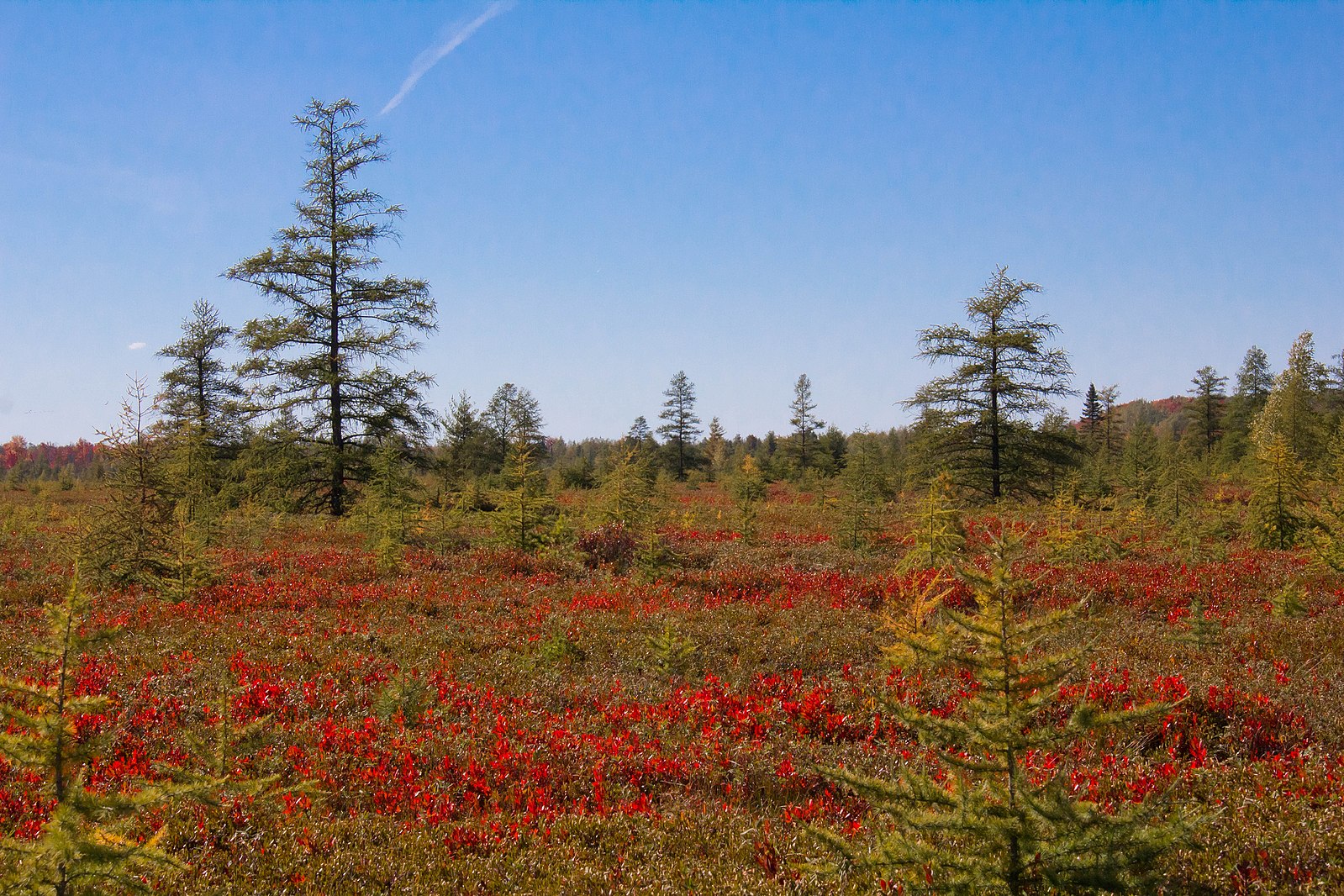
Pitcher plants have a highly modified leaf whose petiole serves as a container for rainwater. The pitcher also possesses features that attract and capture insects who eventually drown there. The water develops a decomposition community of bacteria, fungi, water molds, amoebae, insect larvae and others. As a result of their activity, nutrients become available in a small enough form for the plant to absorb as they do in normal aerobic soil. In contrast, nutrients do not become available to the roots due to the waterlogged peat that pitcher plants are rooted in.
Dense growth of algal (usually cyanobacteria but sometimes green algae) can 'seal' the top of ponds, creating a situation comparable to sphagnum bogs because the wind is not able to inducemixing of the oxygen-rich top layers of the water with the lower layers. Because no light can penetrate the dense algal layer on top, no photosynthesis is possible except at the surface. These factors, coupled with the magnitude of dead plant material that is created by the algal growth and the decomposition of this material by heterotrophs below, cause the lower water levels to become anaerobiceventually drastically altering the species present and limiting the rate of decomposition.
Resources /conditions represent significant avenues whereby species can interact with each other. In particular , two species requiring the same resource can affect each other by making the resource less available for other organism/species. Plants interact with other plants by their consumption of light, nutrients and water. This is the classic explanation for an interaction described as 'competition' although there are other reasons besides resource depletion that might explain why the presence of one species might deter the growth of another species (or at the population level, the presence of one population lessens the population density of a second population).
Globally, two of the most important biotic consequences involving resources are the addition of oxygen to the atmosphere by photosynthetic organisms and the addition of simple mineral forms of nutrients into the soil or aquatic systems as a result of the decomposition carried out by heterotrophs.
Plants provide resources in other ways; their physical structure is important to many other other species : birds nest in trees ; many spiders use plant structures as a base for their webs; p arts of plants and pieces of lichens are often used as building materials for nests.
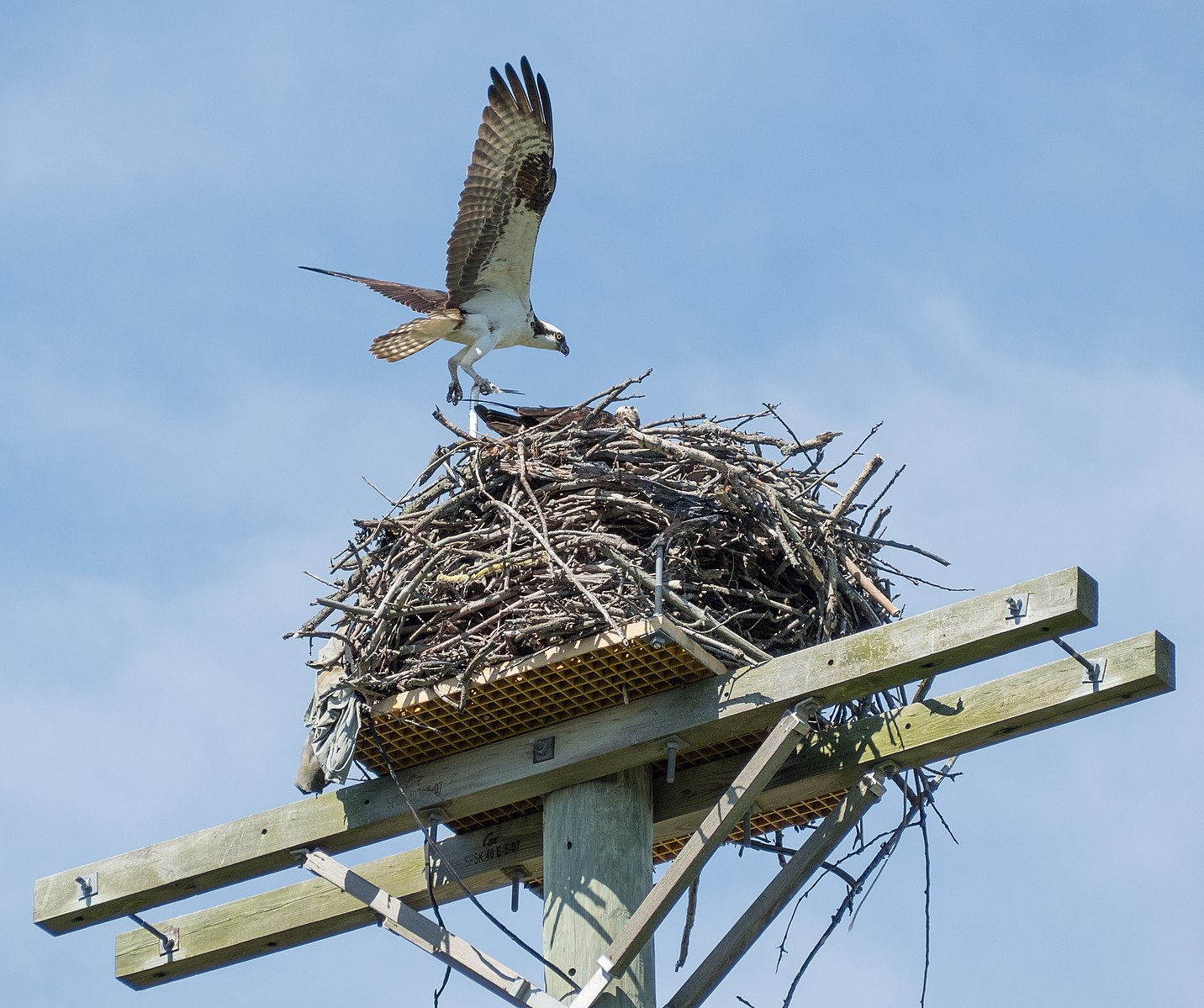
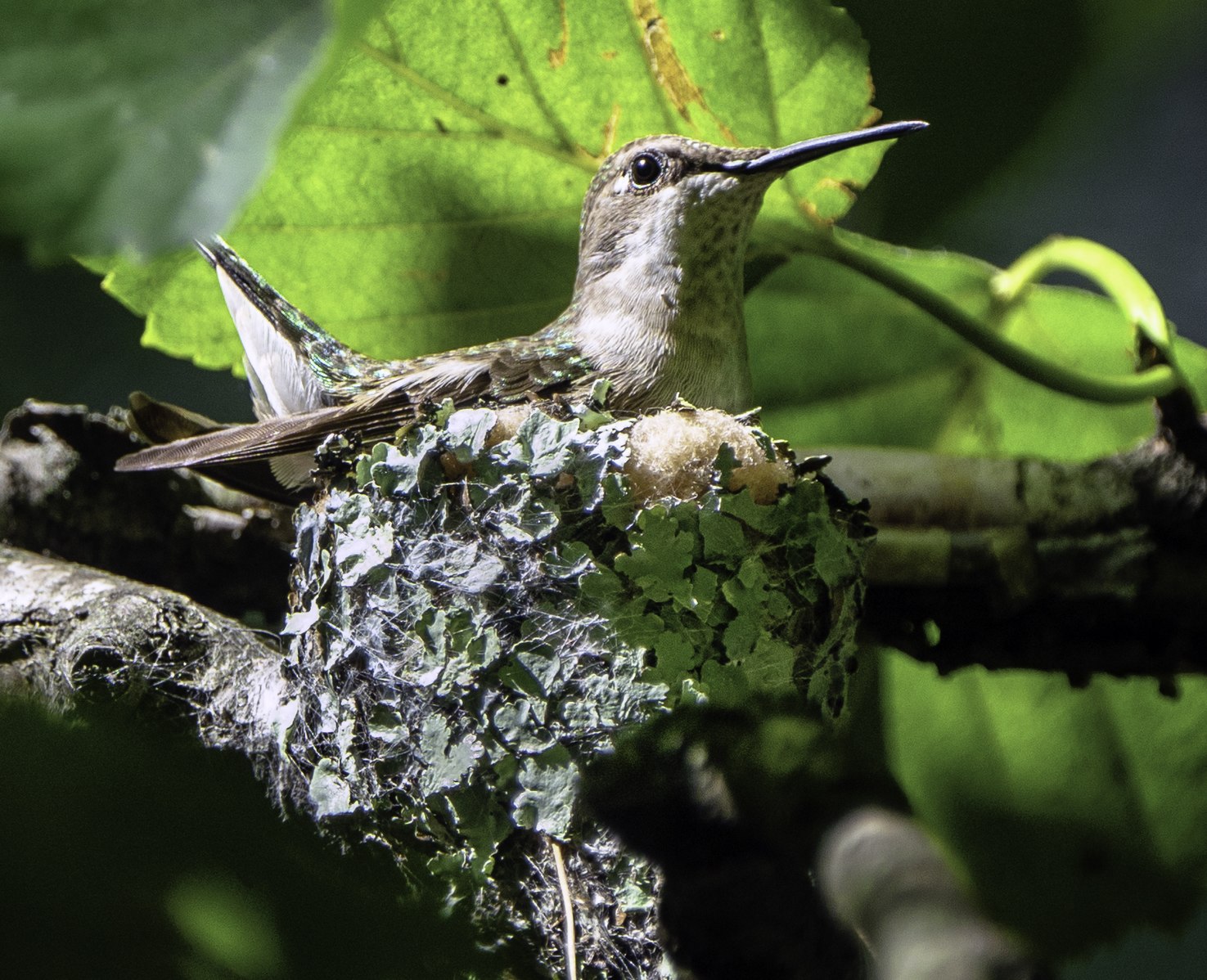
Work Interactions
A number of species interact with each other by providing services, i.e., doing work, for other species. For plants, the most significant of these results fromorganisms that provide mobility, mobility for male gametophytes in pollination and mobility for seeds. Animals transport seeds both 'passively' , when seeds or fruits stick to fur, and 'actively' when the plant attracts animals to a trophic reward (generally fruits, but sometimes seeds, Figure 14) with the mobile animal then transporting the seeds and depositing them (often by defecating) some distance away. For the most part, pollination is active with the plant advertising a trophic reward, which may be nectar (a sugar secretion) and/or may be pollen. In the case of pollinators, not only are some species capable of moving pollen but they can do it in a very directed way, transporting it to members of the same species of plant, thereby allowing cross-pollination and cross-fertilization to occur. This specificity (i.e., mobility to a specific, favorable location) occasionally is the case for seed transport, e.g., Clark's nutcrackers transport seeds to sites that are particularly favorable for the growth of the pines whose seeds they are transporting; certain ant dispersed species bring about movement of seeds to sites (ant nests) that are particularly favorable for seedling establishment (Figure 14).
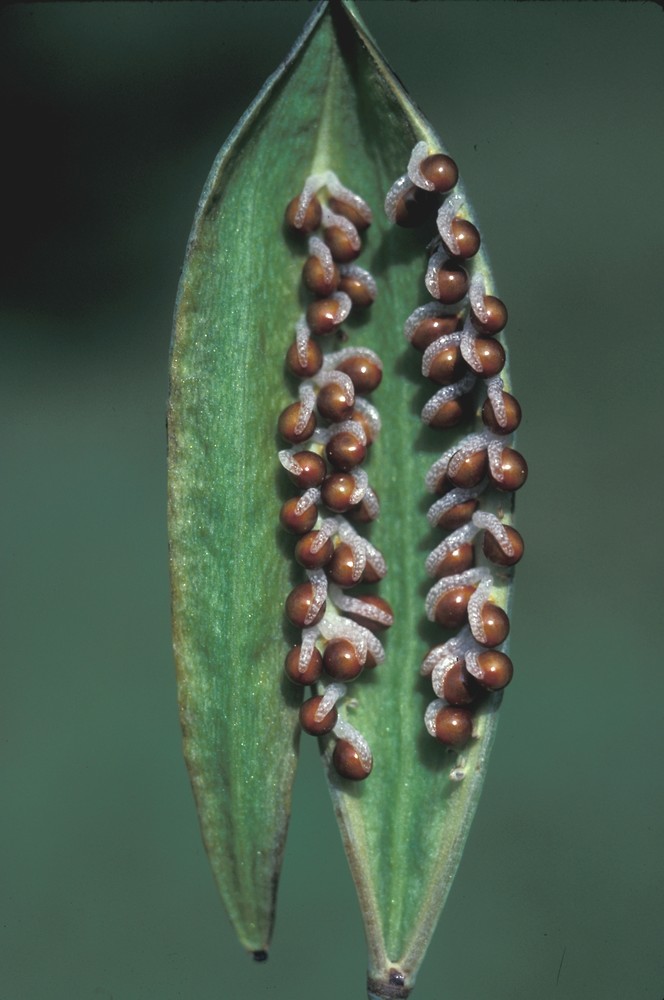
While the common interaction is a 'quid pro quo' with food provided by the plant 'in exchange for' work by the visitor, occasionally the plant is providing a non-food reward. Some orchids provide specific chemicals that serve as pheromones for the insects that acquire them. The Yucca plant provides not only food but also a shelter for larval yucca moths that develop from the eggs that the yucca moth deposits as it is pollinating the plant. Ficus trees provide food and nesting sites for pollinators.
Two excellent sites that consider these interactions are:
- Yucca moth: https://www2.palomar.edu/users/warmstrong/ww0902a.htm
- Ficus: https://www2.palomar.edu/users/warmstrong/pljune99.htm
[Both these links come from an outstanding website ( 'Wayne' s Word') that is an excellent source of botanical information. Take some time to explore it.]
There are a number of examples of 'cheating' by both the visitor and the plant. Some visitors can consume the food reward without picking up pollen and consequently without providing the plant with a service. Plants may attract visitors with visual displays but give them no rewards.
'Protection rackets' describe a relationship where the plant provides food and another species does work by protecting the plant from herbivores. This relationship is particularly well developed in some Acacia trees and shrubs where the plant not only provides food rewards but also provides nesting spots for colonies of ant defenders. Additionally, while the typical food reward (for pollination, seed dispersal and defense) is nectar, a compound that is cheap to produce, some Acacia species provide more complex food rewards, Beltian bodies, packets that are much more rewarding nutritionally because they contain lipids and proteins. These are much more expensive for the plant to make. An extension of this interaction is the three species interaction of plants, aphids and ants. Aphids are insect herbivores that tap into the plant 's phloem tissue using their stylet. Since phloem sap has abundant sucrose but scant amino acids, the aphid eats a lot of phloem sap to acquire the amino acids it needs and the excess sucrose is excreted as ' honeydew ', aka ' frass' (insect excrement). Ants have developed a relationship of defending the aphids from predators while acquiring the honeydew that the aphids produce.
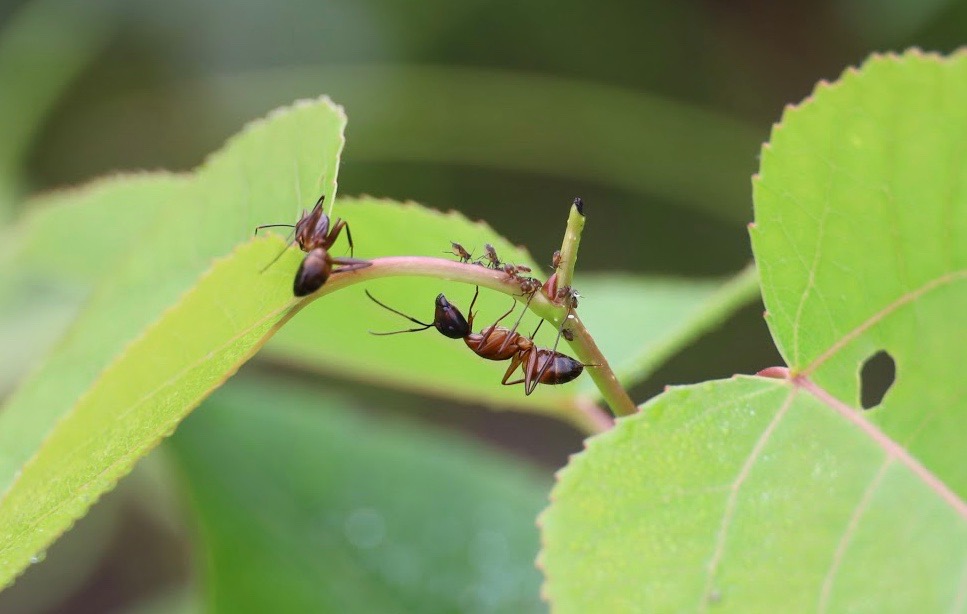
Nitrogen-fixing bacteria do chemical work, the reduction of nitrate to ammonia, for their host plants, in exchange for food and a protected habitat. In nodule forming plants the protected habitat are galls on the roots. The aquatic fern Azolla forms small cavities on the surfaces of leaves that the nitrogen-fixing cyanobacterium Anabaena colonize. This relationship is utilized by rice farmers who encourage the growth of Azolla, a small aquatic plant that lives on the surface of bodies of water. Nitrogen fixed by the cyanobacterium becomes available to the rice when the Azolla dies and is decomposed.
A more 'one-sided' work interaction involvesinsects acquiring and utilizing chemicals that the plant synthesizes. Monarch butterflies acquire a poison from the milkweed plants that they eat. The plant gains nothing but the insect acquires a chemical that deters predation. A similar situation occurs with poison dart frogs. The frogs become poisonous because of the insects that they consume, with yet-to-be-determined plants eaten by the insects providing the specific chemicals. Plants can also be on the receiving end of defensive chemicals as is the case with some fungal endophytes who produce toxins that can affect herbivores.
A number of species utilize the work performed by one species in order to produce a particular structure. One might consider the role of coral animals and lichen fungi to be providing services (structure) for the dinoflagellates and algae that live inside them. Plants provide structural services for other plants as well; vines utilize the structure of other plants and thereby avoid the costs associated with producing structural cells (sclerenchyma fibers) that are needed to produce a rigid stem that can withstand the forces of gravity and wind. There are a group of plants called 'hemiparasites' that utilize the root systems, the structure, of other plants. Their hosts supply them not with food (carbohydrates, which would be a trophic interaction and would require connecting to the phloem tissue) but with water and minerals, that move passively up the host's roots and into the stem of the hemiparasite. At least some of the benefits of mycorrhizal associations may involve a similar type of relationship, with the fungus providing structure to explore the soil to acquire water and nutrients, and the plant providing food for the fungus. In other mycorrhizal associations, there may be more specific actions involved, for example, the fungi may be producingenzymes that mobilize mineral elements and transfer them to their host.
Eating a plant is generally considered positive for the herbivore (the ' eater ' ) and negative for the plant (the ' eatee ' ) but plants may be poisonous to the herbivore and plants may ' benefit ' in a number of ways (e.g., increased growth, increased seed production) in response to being eaten.
Further Reading
“The Microbial World: Biotrophic plant pathogens” by Jim Deacon


